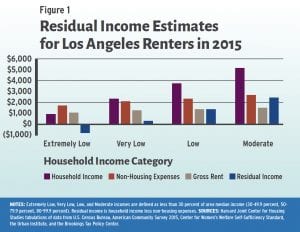Tag
30 percent standard
The Latest

The 30 Percent Rent-to-Income Ratio Doesn’t Add Up in NYC
The 30 percent standard only ‘works’ in calculations where it is irrelevant. The residual-income approach, on the other hand, can turn what all too often becomes an abstract and theoretical discussion into a series of researchable questions.
Search & Filter Within this Topic
filter by Content Type
filter by Date Range
search by Keyword

In Defense of the 30 Percent of Income to Housing Affordability Rule–In Some Cases
At an individual level, the 30 percent standard and the residual-income standard can produce very different results. But as a regional measure of affordability problems, they’re not so far apart.

Affordability: The 30 Percent Standard’s Blinders
Using a simple cost-to-income ratio to measure affordability doesn’t give us a good picture of who is really burdened by housing cost. We need a different approach.

How Should We Measure Housing Affordability?
The simplicity of the 30 percent standard is also its downfall. We don’t expect people of differing incomes or family sizes to pay the same percentage of their income in taxes—why would the same percentage work for housing costs?
